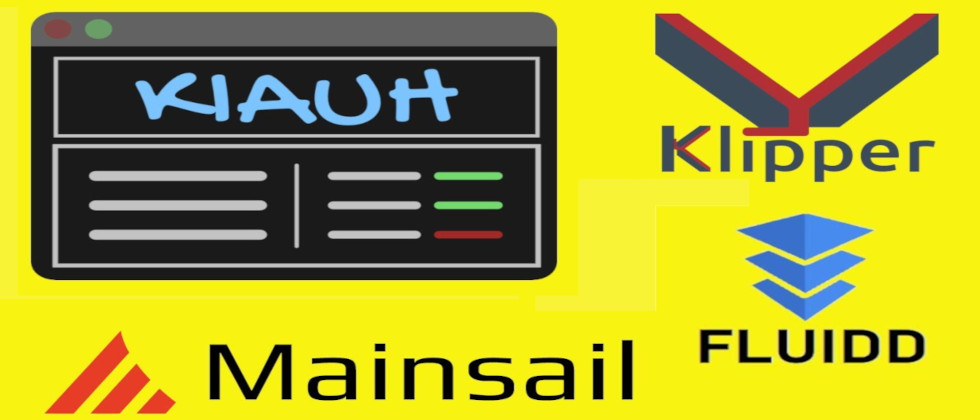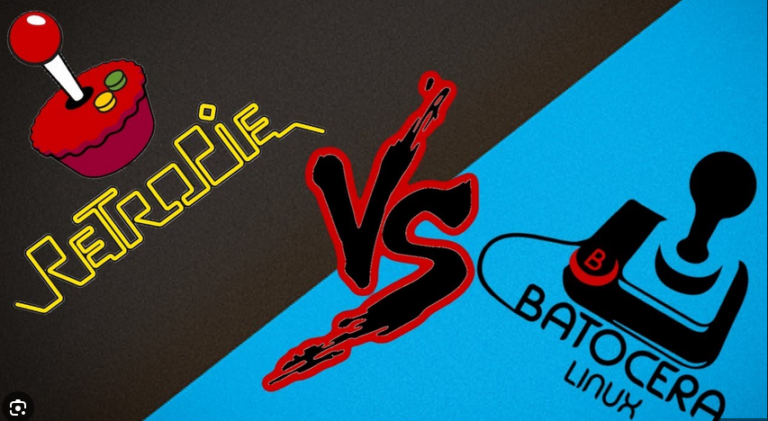Install Klipper, Moonraker, Mainsail, or Fluidd using KIAUH
In the rapidly evolving world of 3D printing, enthusiasts are constantly seeking ways to enhance their machines’ performance and capabilities. One powerful solution gaining traction is the combination of Klipper firmware, Moonraker, and web interfaces like Mainsail or Fluidd. In this comprehensive guide, we’ll walk you through the step-by-step process using the KIAUH tool, while also exploring the distinctive features of Mainsail and Fluidd to help you make an informed choice.
Installation Made Easy: Your Path to 3D Printing Excellence
To kick off your journey, ensure you have the necessary prerequisites, including a device like the Raspberry Pi, we used the Pi Pico Zero 2 W, with camera support enabled and ran weeks of test and lots of prints without a hiccup ‘YMMV’, but it is recommended model 4 or above. Storage larger than 8GB. If using a Pi like device a MicroSD card is recommended over USB due to port power pass-through issues. Raspberry Pi OS Lite, and PuTTY or Terminal for SSH access. Follow the steps to flash Raspberry Pi OS Lite and connect to your Raspberry Pi using SSH. Once connected, update and install Git to prepare for the subsequent installation.
Installation Steps:
Before diving into the installation, ensure KIAUH compatibility with your Linux distribution if you’re not using a Raspberry Pi, with Debian 11 Bullseye recommended. Stay updated with the KIAUH changelog for crucial information, and refer to the troubleshooting section in case issues arise during or after installation. For additional help, consult the KIAUH documentation available at https://github.com/dw-0/kiauh.
KIAUH: Your All-in-One Installation Wizard
Enter KIAUH, a powerful tool that simplifies the installation process. Clone the KIAUH repository from GitHub, navigate to the directory, and execute the klipper-install.sh script. Follow the on-screen instructions to choose Klipper, Moonraker, and your preferred web interface – Mainsail or Fluidd. Provide essential information like printer type and board type, and let KIAUH handle the intricate installation process for you.
Install KIAUH
Connect to your device via SSH connection using a tool like PuTTY or the Terminal app on macOS/Linux/Windows. Tip, If you have a Klipper running on a laptop/desktop and have a screen setup this can be done natively on the device, but an SSH is recommended for easy administration.
Method 1: Download and run the script directly in your terminal:
sudo apt update && sudo apt upgrade -y wget https://raw.githubusercontent.com/dw-0/kiauh/master/klipper-install.sh klipper-install.sh Method 2: Clone the KIAUH repository and run the installation script:
git clone https://github.com/dw-0/kiauh.git
cd kiauh
bash klipper-install.sh The printer.cfg File
1. Obtaining a Config File:
- Start with a template: Download a pre-configured config file for your printer model or a similar one from the Klipper Github repository or community forums. https://github.com/Klipper3d/klipper/tree/master/config Make sure you use the maker, model and correct microcontroller board, or it most likely will not work.
- Create manually: If no template exists, if you know how carefully create one from scratch, but more printers are already made. If needed refer to Klipper’s documentation for detailed instructions on each configuration section.
2. Open the Config File:
- Open in a text editor: Use a code editor like Notepad++, VS Code, or Atom
- The top of the file will have text with information to build binaries for your printer microcontroller board firmware.
3. File Placement:
- Save as printer.cfg: Ensure the filename is exactly “printer.cfg”.
- Place in correct directory: Transfer the file to the /home/pi/klipper/config/ directory on your Klipper host. Tip also put the file in the /klipper/ main directory also, this can help avoid certain bugs that can happen.
4. Reloading Klipper:
Restart command: Use the command
sudo service klipper restart 5. Update system packages again:
sudo apt update && sudo apt upgrade -y Building Binary Firmware
Connect to your device and enter these commands
cd ~/klipper/ make menuconfig Use the options from the top comments of the printer.cfg file you obtained, go through the on-screen options, select the settings for your microcontroller. Once the appropriate “menuconfig” settings have been configured, press “Q” to exit, and then “Y” to save.
Once back in the terminal, enter the command
Make This will output a file out/Klipper.bin this is your printer firmware
Flashing Your Printer
If the comments at the top of the printer configuration file describe custom steps for “flashing” the final image to the printer control board, then follow those steps and then proceed.
Example: These instructions are from the printer.cfg file comments, for flashing a Creality Ender 3 Pro with the 4.2.2 with the STM32F103 microcontroller board.
# Flash this firmware by copying “out/klipper.bin” to a SD card and
# turning on the printer with the card inserted. The firmware
# filename must end in “.bin” and must not match the last filename
# that was flashed.
Mainsail vs. Fluidd: Deciding Your 3D Printing Experience
Now that your firmware and web interface are set up, the choice between Mainsail and Fluidd becomes pivotal. Mainsail boasts advanced customization options and an active community, making it ideal for users who love to tweak settings and seek community support. On the other hand, Fluidd offers simplicity and potential performance benefits, making it a great choice for resource-constrained devices. Consider your preferences and requirements to decide which interface aligns better with your 3D printing goals.
Open KIAUH and choose to install Mainsail or Fluidd:
- Klipper: The high-performance firmware for 3D printers.
- Moonraker: The communication layer between Klipper and the web interface.
- Mainsail or Fluidd: The web interface for controlling your 3D printer with Klipper.
Follow on-screen instructions: Choose the desired software and provide necessary configuration values (printer type, board type, etc.). KIAUH will handle the installation process. In our experience Fluidd installs easy and works well, where Mainsail has extra options but can come with its own difficulties, it comes down to what you like more.
Now that you have Mainsail or Fluidd installed, open a web browser and enter either the IP address for the device or the localhost name. Example: http://192.168.1.105 or 3dprinter.localhost and happy printing.
Empowering Your 3D Printing Journey
- Embrace the power of Klipper, Moonraker, and your chosen web interface with confidence.
- Explore the vibrant communities of Mainsail and Fluidd to enhance your 3D printing experience.
- Stay informed with regular updates from the KIAUH team.
- Troubleshoot effectively with the KIAUH documentation.
For more advanced installations or specific setups, consult the KIAUH documentation: https://github.com/dw-0/kiauh





